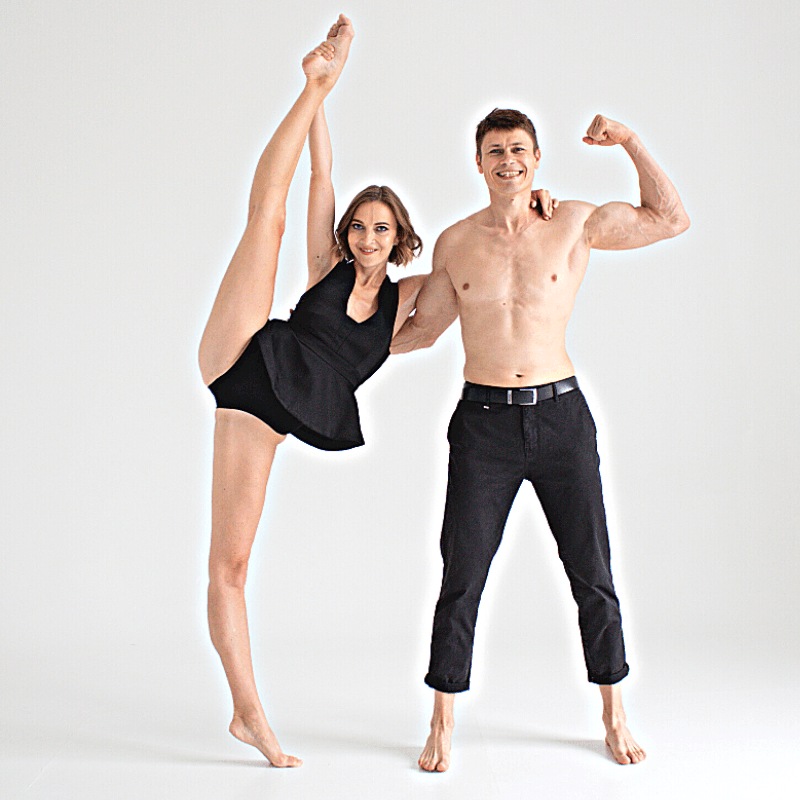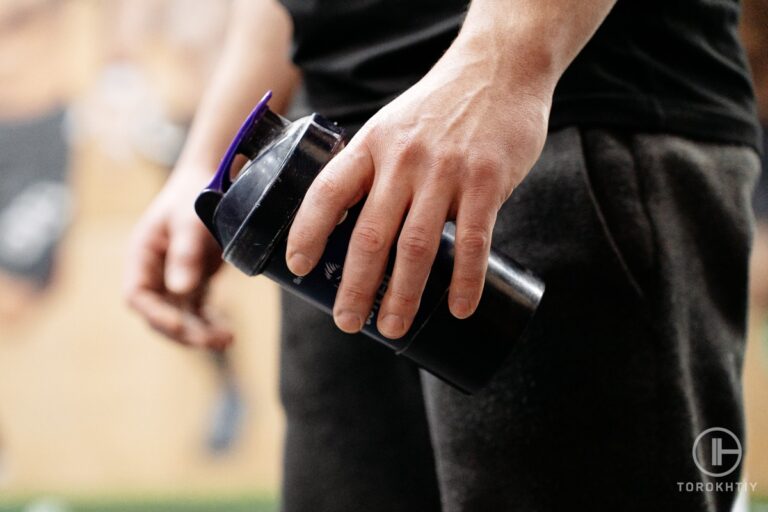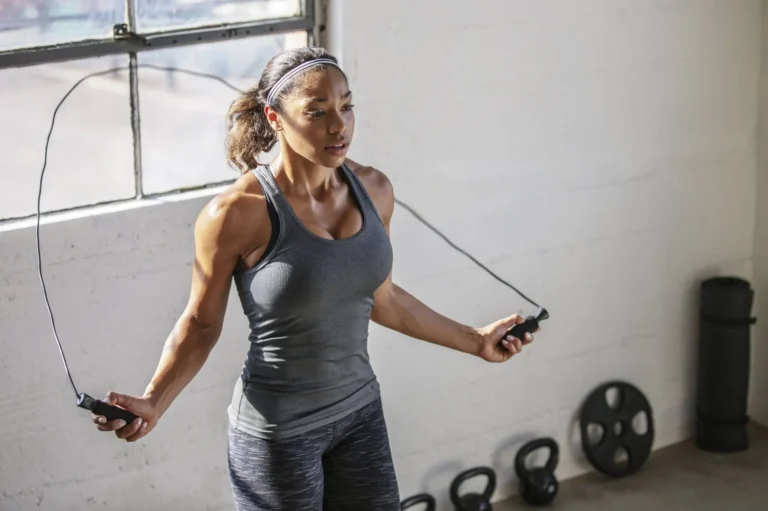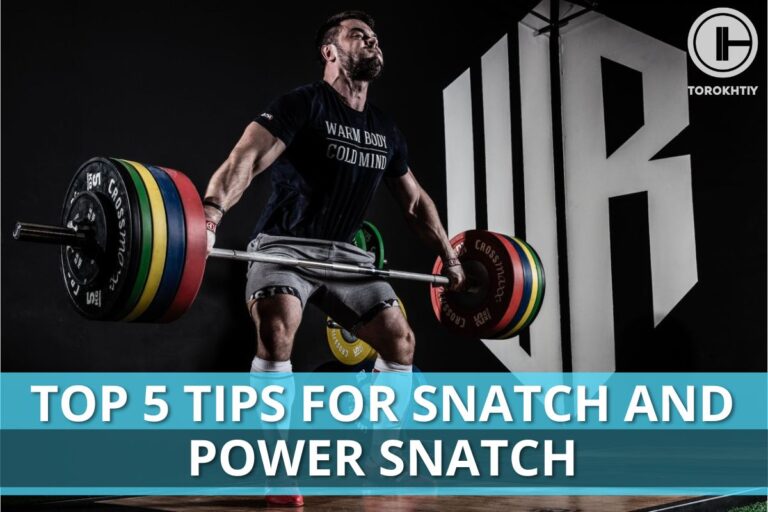Benefits Of Splits For Physical Activity And Daily Life
The benefits of splits come in various forms and affect your physical and mental well-being. Regularly practicing them offers a multitude of advantages in both physical activities and daily life. With proper dedication and training, anybody can achieve the perfect split.
But are splits good for you and are there things you should be mindful of when practicing them? Let’s find out.
The benefits of splits are both physical and mental. Improved physical fitness through high flexibility and mobility and a better mindset through achievement satisfaction and release of excess energy are just some of the benefits of being able to do the splits.
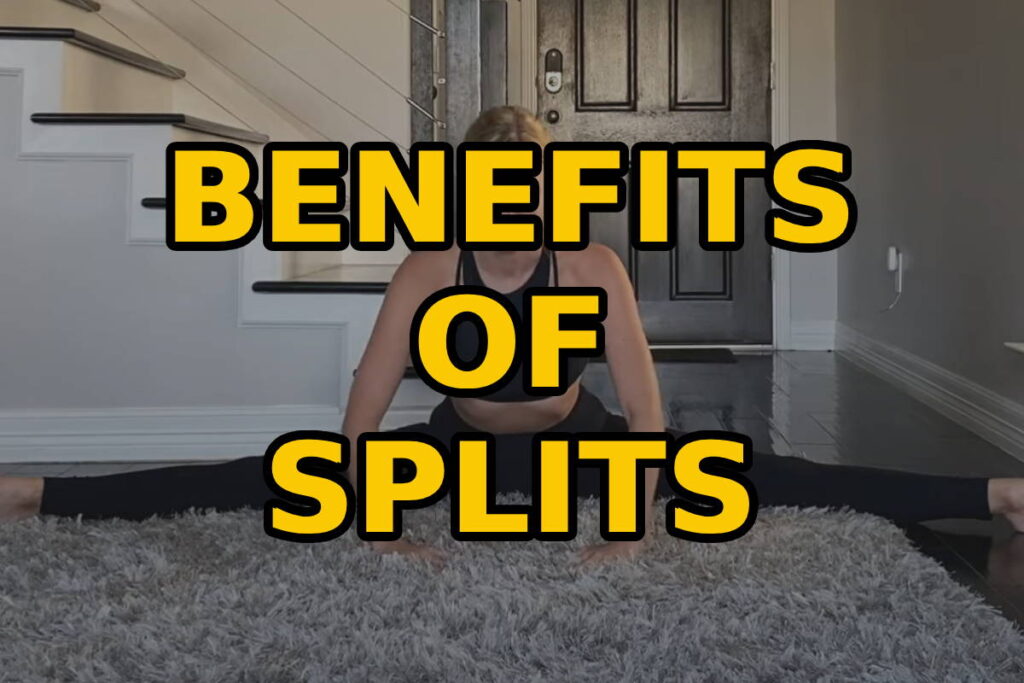
Physical And Mental Benefits Of Splits
Practicing splits can progress your physical and mental health and enhances your overall well-being. Here are just some of the benefits of doing the splits:
Physical Benefits
1. Improved Flexibility
Probably the most obvious physical benefit of practicing your splits is reaching new levels of flexibility, particularly in your lower body. Splits stretch out major connective muscles such as the hip flexors, hamstrings, hip adductors, glutes, quadriceps, and others. Being able to stretch out with ease without feeling discomfort and pain can help with everything from daily activities like bending down to tie our shoes to engaging in physical activities like dancing or martial arts with greater fluidity and grace.
2. Increased Range Of Motion
Closely tied to the first point about flexibility, a body that’s more comfortable with stretching out also has a greater range of motion (ROM). Practicing splits will help you achieve a greater ROM in your hips and legs, which is beneficial for everything from daily movements like walking and running to participating in demanding and dynamic activities like playing sports or gymnastics.
3. Higher Mobility
Flexibility is a static body mechanic that primarily pertains to the capacity to stretch individual muscles without difficulty. On the other hand, mobility encompasses flexibility, range of motion, and body control all at the same time to execute dynamic movements. For example, raising your leg for martial arts kicks, jumping for a basketball layup, quickly turning and switching running direction in soccer, etc.
So, how does practicing splits increase mobility? Simple, even though a split itself is static, entering splits is very much a dynamic one. As you get more comfortable with your splits, you’ll be able to do them smoother, faster, and from various starting positions. Performance artists like dancers and gymnasts know this best. One day you’re able to enter a split from a standing position, the next you can combine a cartwheel or backflip into a full split and get back up within a few seconds.
4. Better Posture
Despite living in an era with an abundance of leisure time, it is widely recognized that we are experiencing a decline in physical activity compared to previous generations. Causes vary, but a leading culprit is what’s known as a Sedentary Lifestyle. In the most basic terms, we’re simply sitting down more and more in our daily life, both for work and entertainment.
Thanks to the constant pressure on our mid and lower body, namely our hips, glutes, and core, we’re experiencing higher levels of musculoskeletal misalignment and close to entering something of a posture epidemic. One of the benefits of doing splits is engaging and stretching out the very same muscle groups that suffer as a result of prolonged sitting.
5. Reduced Risk Of Injury
The combined above-mentioned points can culminate into an overall reduced risk of injury both from daily tasks and physical activities.
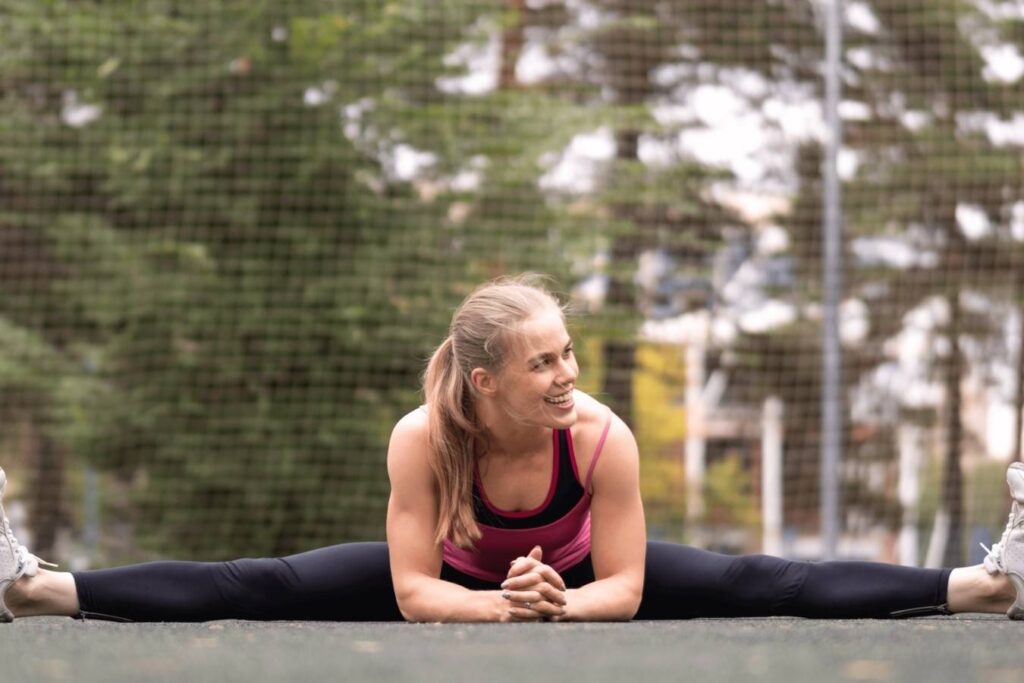
Mental Benefits
1. Happiness And Self-Fulfillment
Engaging in physical activities is known for boosting our morale and self-perception. This, of course, is not random, as exercise is known to release “happiness” chemicals, namely Dopamine, Serotonin, and Noradrenaline, into our system.
Dopamine is often referred to as the “feel-good” chemical. In essence, it’s the immediate “rush” you feel when you do something that feels pleasurable. Serotonin is known as the “mood stabilizer” and regulates our mindset and self-satisfaction. In basic terms, the release of Serotonin switches us from a “can’t do” into a “can do” attitude.
Finally, Noradrenaline is a stress responder chemical. On a physical level, it increases our heart rate, constricts blood vessels, and raises blood pressure in response to stress or danger. This sudden rise in cardiovascular activity increases our “readiness” level and, raising our attention, sharpening our focus, and increasing confidence in our abilities.
2. Emotional Regulation
Closely tied to our previous point, physical activity has a known positive effect on our emotions and there’s plenty of research to back it up. For this reason, exercise has been recommended as a means of regulating our emotions, particularly as a cure for feelings of depression.
3. Achievement Satisfaction
Splits are not something you can learn overnight, they take time and dedication. Learning splits is a long-term goal that comes with a high sense of accomplishment. This exciting feeling of achieving a long-standing goal known as attainment satisfaction or achievement satisfaction, and studies suggest people who experience it more often have a greater overall life satisfaction.
4. Relaxation
In essence, practicing splits is a stretching exercise, and muscle stretching is known for feeling highly relaxing, hence the popularity of activities like yoga. This isn’t just a placebo, studies suggest people who practice stretching report less overall muscle tension and reduced EMG activity (for example, nervous shaking and twitching and needing to occupy yourself physically, even when static).
5. Excess Energy Release
Splits are something you can fairly easily practice at home and don’t require much equipment other than a comfortable practice mat. If you have excess energy or experience feelings of restlessness but don’t have the opportunity to, for example, hit the gym or play sports, stretching and practicing your split can be a great way to release excess energy.
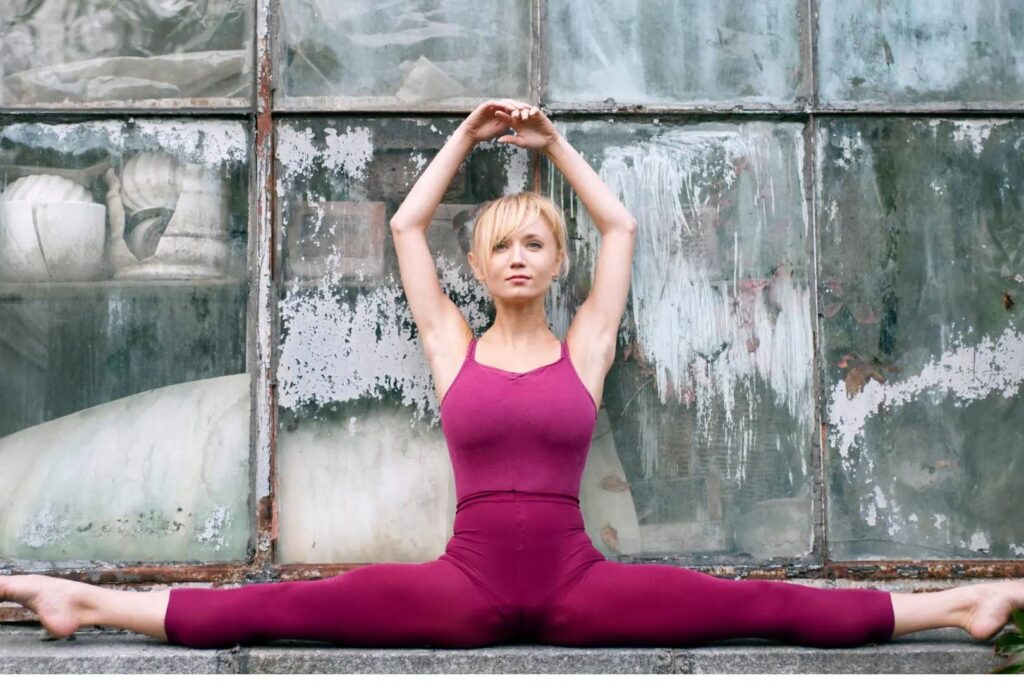
Possible Side Effects And Risk Of Splits
Splits are considered a relatively low-impact exercise and are pretty straightforward to learn. But are splits good for you or do they carry a few caveats? Here are some risks and side effects to pay attention to as you train your split:
1. Overstretching
Arguably the most common risk of doing splits, especially for beginners, is the likelihood of overstretching. Stretching your body beyond what it’s normally used to can be a painful (or at the very least discomforting) process and should be tackled gradually and slowly. When you attempt a split, major muscle groups and connective tissues elongate as a result of applied force. If you’re not careful or have an exercise accident that forces you to overstretch, it can cause injuries such as sprains, strains, and tears.
2. Delayed Onset Muscle Soreness (DOMS)
The feeling of muscle soreness or stiffness that often results from overexercising is called Delayed Onset Muscle Soreness or DOMS for short. This feeling is perfectly normal and usually subsides after a few days of rest. However, intense DOMS may stop you from training for a longer period, and trying to push past them may lead to severe pain and require medication or medical intervention to treat.
3. Joint Inflammation
Doing splits too often or training for too long, especially if you’re a beginner, can be bad for your joints. The major joints included in a typical split include your hips, knees, ankles, and spine. Intense or repetitive stretching of the joints can cause irritation and inflammation in the surrounding tissues, including the joint capsules, tendons, and ligaments.
4. Decrease In Strength
Achieving the perfect split usually takes anywhere from a few weeks to a few months. During this phase, athletes often prioritize stretching over strength training to avoid muscle soreness caused by resistance exercises. If you’re someone who does regular strength training and are aiming to learn splits, temporarily pausing resistance training may be necessary, potentially resulting in a loss of overall strength.
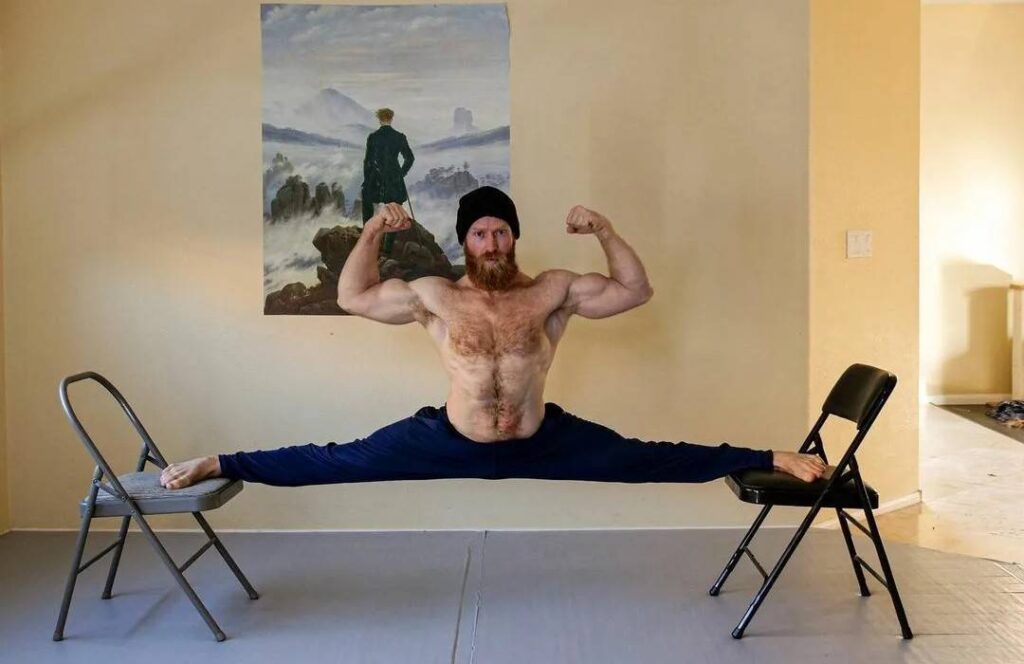
Tips For Doing Splits Right And Safe
Doing splits can be challenging, especially if you don’t have the right approach. It’s not as simple as just “stretching out your legs”, there are little details you should be mindful of. Here’s a simple step-by-step guide on how to get started:
1. Always Start With A Warmup
Warmups are an essential part of any exercise. From a physical sense, they raise metabolic and cardiovascular activity and stretch out our muscles and joints. Mentally, they prepare us in anticipation of physical activity. Warming up our lower body can decrease injury risk, making it especially important before attempting physically challenging activities like splits.
The ideal warmup for splits consists of stretching out relevant muscle groups in our lower body through common exercises like forward folds, moving lunges, quad stretches, as well as dynamic movements like hip rotations, knee-ups, high-kicks, and similar.
2. Focus On Your Posture
Keep in mind, the only safe way to do a split is with your back straight. As you descend, it’s vital you keep your core tight to prevent leaning back and forth. Furthermore, keep your gaze forward. At first, you may find this difficult simply due to feeling scared of not looking in the direction you’re going. This is a perfectly normal feeling, but it’s important to practice looking ahead, as keeping your chin up aligns your spine, making your split safer for your back and better looking.
3. Control Your Descent
When practicing your splits, the easiest way to injure yourself is losing control, which can lead to sudden overstretching or falling. To avoid this, it’s important to control your descent and pay attention to your body. If you’re not yet capable of doing a full split, it’s best to practice within range of something to grab onto. If you’re practicing inside a fitness studio, it’s highly likely they have a ballet bar you can use. If you’re at home, holding onto furniture such as your couch may suffice, just make sure it doesn’t move around and you can safely grab onto it to help you descend and ascend.
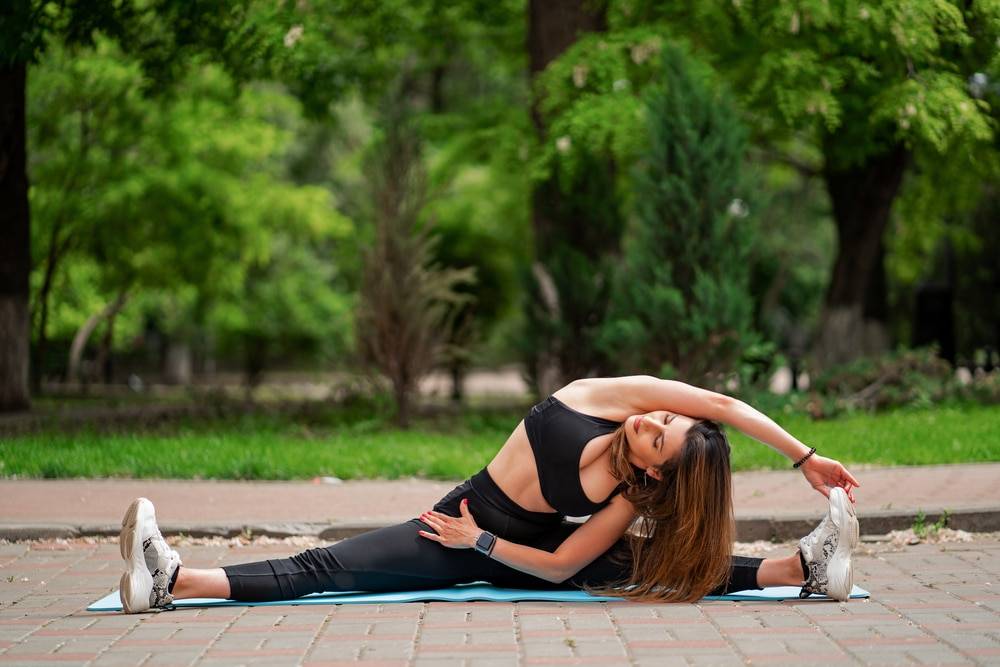
4. Use Supportive Aids
It’s always a good idea to have a soft floor cover such as a yoga mat or gym tiles. If you’re new to splits, you may not be able to reach the floor just yet. If that’s the case, use a chair, stool, or similar and gradually ease yourself down onto it while stretching your legs. As you get closer and closer to the floor, you can utilize soft objects like yoga blocks, a stack of pillows or folded towels to make your landing more comfortable.
5. Remember To Breathe
When you hold your breath for too long, you activate the Sympathetic Nervous System (SNS), which is responsible for the fight-or-flight response. Your brain then signals to your muscles to increase in tension as a preparation for action. Tense muscles not only make it harder to enter your split, they also increase the chance of strains or sprains. A combination of deep breaths and a consistent breathing rhythm helps you feel more relaxed, and your body will respond accordingly. When beginning your split, exhale as you start to go down. As your pelvis is about to touch the floor, take a deep breath then exhale fully.
Tip for splits: When you start your split, breathe in as you reach the top. Exhale as you begin to go down, then come back up with your pelvis on top, and take a deep breath again.
6. Stick To Your Program
Unless you have extensive experience in gymnastics or a similar activity, it’s always best to stick to a training program created by professionals. Consider seeking guidance from a qualified professional, whether it be through in-person coaching or an online course. It’s the safest way to know that what you’re doing is effective and will lead you to your desired results.
7. This Is How It Looks Like
To begin the split, extend one leg and then the other, ensuring a smooth and controlled downward motion. Halfway down, you can start using your hands to balance your weight and control your descent. As your pelvis starts touching the floor, gradually transition from your hands to your hips. Maintain a straight back and draw your shoulder blades together for better posture. Gently rotate your knees forward and exhale, allowing your pelvis to fully touch down with grace and ease.
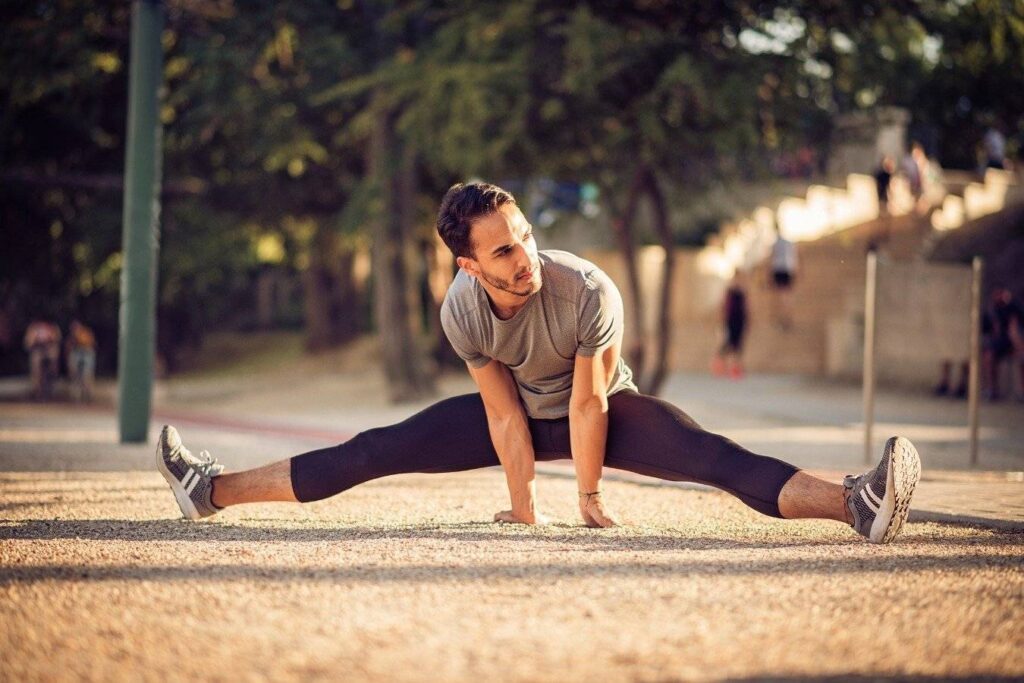
Can Children Do Splits?
Yes! Children are naturally more flexible than adults due to two factors. Firstly, they have more bones that eventually fuse as they grow. Secondly, their bones are more flexible, allowing them to bend and flex to a higher degree without risk of fractures.
This increased flexibility allows children to learn activities requiring mobility and flexibility more easily than adults. Children can pick up splits relatively quickly, and the physical abilities gained during childhood often remain with them throughout life. Gymnastics is highly recommended by pediatricians as a means of physical education for kids. Furthermore, studies show that children who practice it maintain better posture control and physical literacy as they age.
Anecdotally speaking, basic gymnastics moves such as the cartwheel, bridge pose, and split used to be taught in schools in P.E. class, yet that’s slowly been going away. Additionally, a disheartening yet unsurprising trend indicates that each successive generation of children is increasingly less involved in sports and physical activities, opting instead to spend time in the digital world. If you can’t sign them up for a gymnastics class, practicing splits can be a fun and helpful activity to do at home with your child. Plus, when they see their progress, they’ll feel a sense of accomplishment and gain motivation to try out other things, too.
Can You Do Splits If You Are New To Gymnastics?
If you’re new to gymnastics, how quickly and easily you’ll be able to learn splits will depend on your current physical fitness and health. If you have prior training experience in related activities like martial arts, yoga, or dance, for example, you might be able to learn them faster than a complete novice.
That said, as a beginner gymnast, you should be especially patient with your body and careful in your practice. Listen to your coach and stick to the training routine set out for you, whether you’re taking in-person classes or following an online course.
🔻21-DAY SPLIT CHALLENGE
Unleash your flexibility potential with our progressive 21-day training program.
This program will help you to:
- ✅ Achieve a Perfect Split
✅ Boost Hip Mobility
✅ Sculpt Aesthetic and Sexy Legs
✅ Banish Stiffness
✅ Enhance Mental Confidence
☀️ Specially designed for you by a Cirque du Soleil artist, use it!
FAQ
Is It OK To Do The Splits Every Day?
Yes, it is generally safe to do splits every day, as long as you’re listening to your body and observant of pain and discomfort.
Are Splits Good For Hips?
Practicing splits can be highly beneficial for hip flexibility and mobility. That said, injuries in the hip area can occur if you’re not careful with how you enter and exit the split. It’s important to be mindful of your ability level before attempting a harder version of splits.
How Long Should I Hold My Splits?
Splits are a static stretching position that causes strain on the muscles, no matter how comfortable you are with doing them. As such, doing them for too long is not recommended. For beginners, holding splits for 15-30 seconds is enough practice, while advanced athletes are free to hold them even up to 3 minutes.
Conclusion
In summary, the benefits of splits affect both the body and mind. Consistent practice can lead to notable improvements in your flexibility, mobility, range of motion, and posture, among other things. Moreover, mastering the split brings a sense of achievement and pride, making it an enjoyable learning experience and resulting in an impressive and useful skill that stays with you for life. The benefits of being able to do the splits are plentiful, and they’re especially good for children.
Do you plan on practicing splits in the near future? Also, if you have any previous experience in related disciplines like gymnastics or dance, we’d love to hear about it.
Leave a comment letting us know and remember to follow our social media pages for more valuable fitness content.
Also read:
- Handstand for Beginners
- How to Hold a Handstand Longer
- Handstand Benefits
- Straddle Split
- How Long Does It Take To Be Able to Do the Splits
- Handstand Drills
References:
- Range of Motion // Physiopedia: https://www.physio-pedia.com/Range_of_Motion
- The sedentary (r)evolution // NCBI: https://www.ncbi.nlm.nih.gov/pmc/articles/PMC5710317/
- Sedentary Lifestyle // NCBI: https://www.ncbi.nlm.nih.gov/pmc/articles/PMC7700832/
- Ergonomics for Prolonged Sitting // UCLA: https://www.uclahealth.org/medical-services/spine/patient-resources/ergonomics-prolonged-sitting
- Exercise Benefits Brain Function // NCBI: https://www.ncbi.nlm.nih.gov/pmc/articles/PMC4061837/
- Dopamine// Cleveland Clinic: https://my.clevelandclinic.org/health/articles/22581-dopamine
- Serotonin // Cleveland Clinic: https://my.clevelandclinic.org/health/articles/22572-serotonin
- Norepinephrine (Noradrenaline) // Cleveland Clinic: https://my.clevelandclinic.org/health/articles/22610-norepinephrine-noradrenaline\
- How Does Exercise Improve Implicit Emotion Regulation Ability // NCBI: https://www.ncbi.nlm.nih.gov/pmc/articles/PMC6718717/
- Achievement goals and life satisfaction // NCBI: https://www.ncbi.nlm.nih.gov/pmc/articles/PMC6974350/
- Muscle stretching as an alternative relaxation training procedure // NCBI: https://pubmed.ncbi.nlm.nih.gov/2197297/
- What Are the Dangers of Overstretching? // HealthLine: https://www.healthline.com/health/overstretching
- Delayed onset muscle soreness // NCBI: https://pubmed.ncbi.nlm.nih.gov/12617692/
- The effectiveness of neuromuscular warm-up strategies, that require no additional equipment, for preventing lower limb injuries during sports participation // BMC: https://bmcmedicine.biomedcentral.com/articles/10.1186/1741-7015-10-75
- Sympathetic Nervous System (SNS) // Cleveland Clinic: https://my.clevelandclinic.org/health/body/23262-sympathetic-nervous-system-sns-fight-or-flight
- Effectiveness of Progressive Muscle Relaxation, Deep Breathing, and Guided Imagery in Promoting Psychological and Physiological States of Relaxation // NCBI: https://www.ncbi.nlm.nih.gov/pmc/articles/PMC8272667/
- How Many Bones Are Babies Born With and Why Do They Have More Than Adults? // HealthLine: https://www.healthline.com/health/how-many-bones-does-a-baby-have
- Why Kids’ Bones Are Different From Adults’ Bones // Choa: https://www.choa.org/parent-resources/orthopedics/why-kids-bones-are-differen
- The effect of educational gymnastics on postural control of young children // Frontiers: https://www.frontiersin.org/articles/10.3389/fpsyg.2022.936680/full
- Survey: Kids quit most sports by age 11 // ProjectPlay: https://projectplay.org/news/kids-quit-most-sports-by-age-11
- How long should you hold a stretch? // HealthLine: https://www.healthline.com/health/how-long-to-hold-a-stretch#how-long
Why Trust Us?
With over 20 years in Olympic Weightlifting, our team does its best to provide the audience with ultimate support and meet the needs and requirements of advanced athletes and professional lifters, as well as people who strive to open new opportunities and develop their physical capabilities with us.
By trusting the recommendations of our certified experts in coaching, nutrition, dietology, and sports training programming, as well as scientific consultants, and physiotherapists, we provide you with thorough, well-considered, and scientifically proven content. All the information given in the articles concerning workout programming, separate exercises, and athletic performance, in general, is based on verified data. We ensure that you can rely on our professionals’ pieces of advice and recommendations that can be treated as personalized ones which will benefit you and fully meet your needs.
The product testing process is described in more detail here
Author: Oleksiy Kononov
Former Cirque Du Soleil Artist
Ukrainian Gymnast
More than 25 years ago Oleksiy started his sports career. He major in gymnastics which is definitely not an easy sport to go in for!
To become an athletic champion (in Ukraine, for instance, we mean here the title of “Master of Sports”) in gymnastics, one needs to spend at least 10 years and start training no later than being six years old. As for Oleksiy, he has fulfilled all the criteria.
During this period of time, definitely not short, he managed to become:
- Master of Sports, Champion of the State and International Tournaments;
- Member of the national team of Ukraine, having a perfect opportunity to train the best team ever!
- Part of Cirque Du Soleil team (as an artist).

